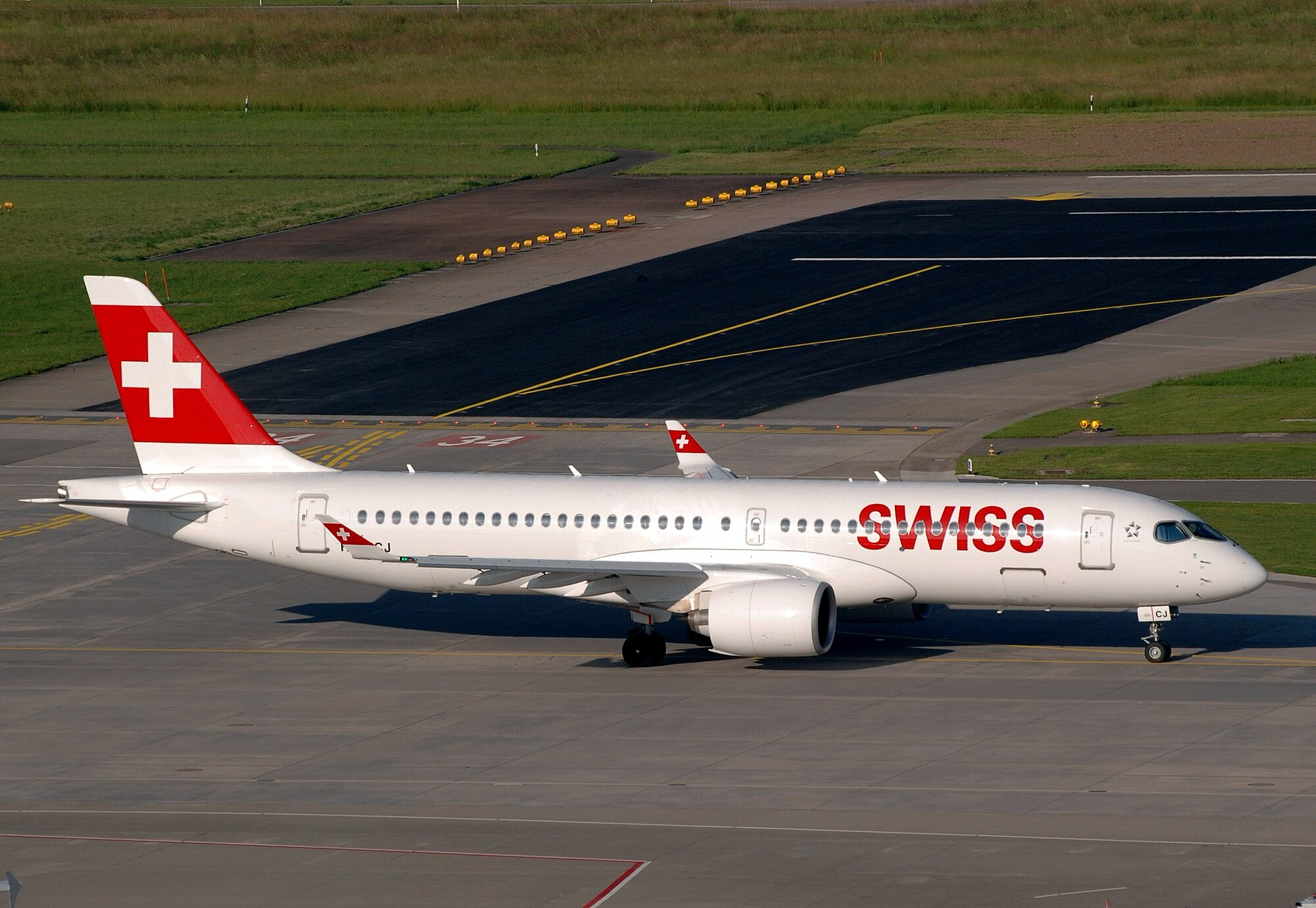Flight LX-977 | Registration: HB-JCO
Date: 30 March 2025 | Location: Berlin Brandenburg Airport (EDDB), Germany
Introduction
On 30 March 2025, a Swiss International Airlines Bombardier CS300 (Airbus A220-300), registration HB-JCO, operating scheduled passenger service LX-977 from Berlin Brandenburg Airport (EDDB), Germany, to Zurich Airport (LSZH), Switzerland, experienced a suspected technical malfunction involving the landing gear during the initial climb.
The crew levelled off at 5,000 feet and advised Berlin ATC of possible issues with the right main landing gear. The flight returned to Berlin approximately 35 minutes after departure, landing safely on runway 25L. While no injuries were reported, the airport confirmed that small components were found on the runway, believed to have separated from the right main gear during take-off.
The occurrence has been classified as a serious incident, and both Swiss International Airlines and German aviation authorities have launched internal assessments.
Flight Details
• Aircraft Type: Bombardier CS300 (Airbus A220-300)
• Engines: 2 × Pratt & Whitney PW1524G
• Operator: Swiss International Airlines
• Tail Number: HB-JCO
• Flight Number: LX-977
• Callsign: SWR977
• Departure Airport: Berlin Brandenburg Airport (EDDB), Germany
• Destination Airport: Zurich Airport (LSZH), Switzerland
• Date of Incident: 30 March 2025
• Occupants: 127 passengers + crew
• Phase of Flight: Initial climb
• Altitude at Level Off: 5,000 feet
• Time of Occurrence: Approx. 14:40 local (12:40Z)
• Runway Used: 25L for both departure and return landing
Sequence of Events
Take-Off and Climb
Flight LX-977 departed from Berlin’s runway 25L on schedule. Shortly after gear retraction, the crew received a warning indicating a potential brake or landing gear issue, specifically related to the right main landing gear. The aircraft stopped its climb at 5,000 feet and entered a holding pattern as the flight crew coordinated with maintenance and ATC.
In-Flight Decision and Return
With a technical issue suspected and no confirmation of gear health, the crew opted to return to Berlin as a precaution. No emergency was declared, but ground services were placed on standby. The aircraft landed safely back on runway 25L roughly 35 minutes after departure.
Upon landing, the aircraft remained on the runway briefly before being towed to the apron for inspection. The return was executed without further complications.
Post-Landing Investigation
Airport Inspection
Following the landing, Berlin Airport authorities conducted a runway sweep and discovered small parts near the departure path. These were believed to have separated from the aircraft’s right main landing gear during the take-off roll or retraction sequence.
Maintenance Findings
On 31 March 2025, Swiss International Airlines released a statement confirming that the crew had received an indication related to brake performance after take-off. However, upon detailed post-flight inspection, no damage or mechanical fault was found. The airline concluded that the issue was likely the result of a false indication rather than a hardware failure.
Aircraft Status and Passenger Impact
• Ground Time: As of reporting, the aircraft remains grounded in Berlin more than 8.5 hours after the event for continued technical evaluation.
• Passenger Rebooking: All 127 passengers were rebooked onto later flights or alternate connections to Zurich.
• Flight Continuity: No injuries were reported, and passengers were offered compensation in line with EU261 regulation standards.
Technical Considerations
Possible Contributing Factors
Although declared a false indication, the event raised concerns due to:
• Spontaneous Component Separation: Unconfirmed reports of physical debris on the runway may indicate a minor mechanical failure or loose external component (e.g., brake wear indicator, gear bay cover).
• Brake or Gear Sensor Fault: A fault in the brake monitoring system or a failed proximity sensor could lead to misleading cockpit alerts.
• Data Interpretation Error: The integration of electronic braking control units (EBCU) in the A220/CS300 can result in overly sensitive fault alerts.
Further analysis by Bombardier (Airbus Canada) and Swiss maintenance teams is likely to determine the source of the indication and verify the condition of the removed parts.
Safety Actions and Reporting
• Crew Response: Swift, by-the-book reaction by the flight crew ensured safety of the aircraft and passengers.
• Maintenance Reporting: The aircraft’s on-board systems are being reviewed and data from the Central Maintenance Computer (CMC) downloaded for analysis.
• Regulatory Oversight: German aviation safety authorities (BFU) have been notified. Depending on findings, an official investigation may be launched if mechanical failure is confirmed.
Summary and Outlook
This serious incident involving Swiss International Airlines highlights the importance of crew caution in response to gear or brake alerts, especially in early flight phases. While the outcome suggests a benign false warning, the simultaneous discovery of debris warrants further scrutiny to rule out latent component failure.
The incident underscores how advanced avionics, while essential, must be continuously evaluated for false positives and misinterpretation risks, especially in fly-by-wire systems like the A220/CS300.
The aircraft remains under assessment, and additional updates will follow once conclusive findings are available from maintenance logs and potential debris analysis.
Disclaimer
This report is based on publicly available information and airline statements as of 31 March 2025. All technical conclusions are subject to revision pending the outcome of maintenance investigations. If you are the rightful owner of any referenced content or images and wish them removed, please contact takedown@cockpitking.com.
